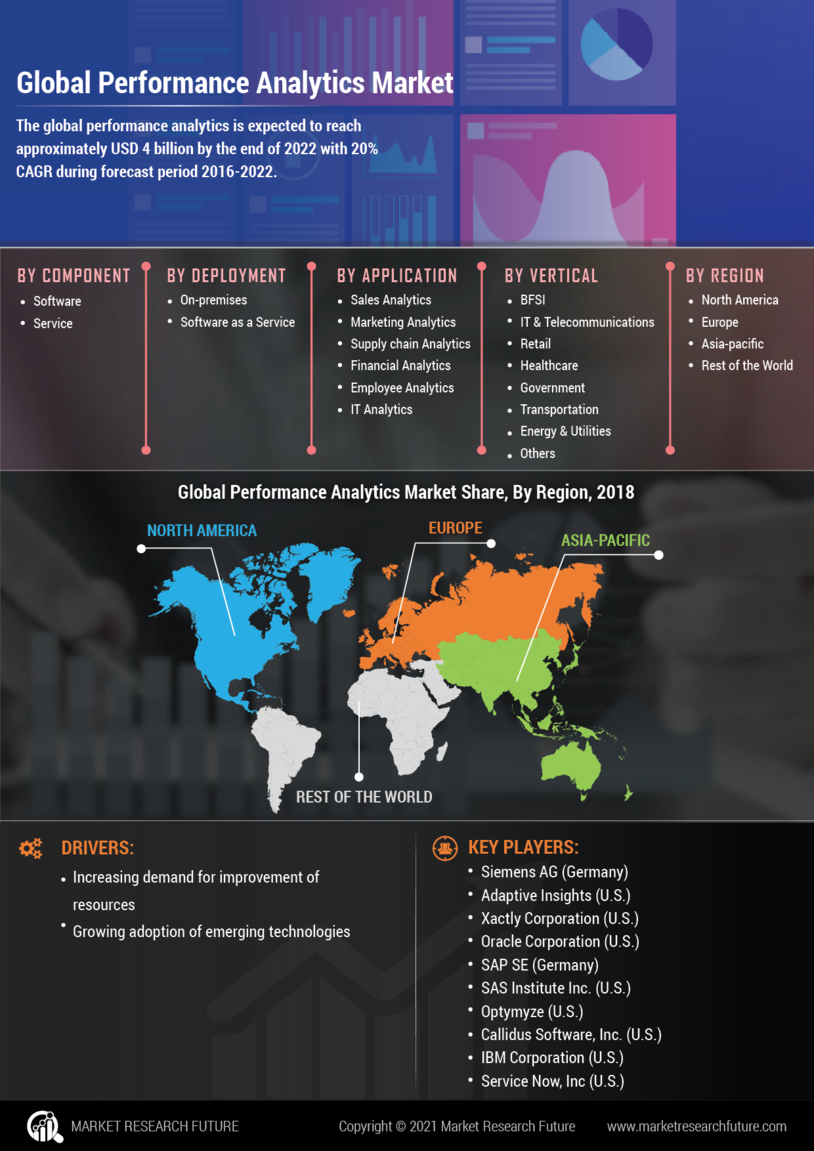Advancements in Technology
Technological advancements play a crucial role in shaping the Performance Analytics Market. Innovations in machine learning, artificial intelligence, and big data analytics are transforming how organizations analyze performance metrics. These technologies enable more sophisticated data processing and predictive analytics, allowing businesses to forecast trends and optimize performance. The market is projected to grow at a compound annual growth rate of 15% over the next five years, driven by these technological enhancements. Companies are increasingly adopting advanced analytics tools to gain insights into customer behavior and operational efficiency, thereby enhancing their overall performance. This trend indicates a robust future for the Performance Analytics Market as technology continues to evolve.
Increased Focus on Operational Efficiency
The relentless pursuit of operational efficiency is a significant driver in the Performance Analytics Market. Organizations are under constant pressure to streamline processes and reduce costs while maintaining high-quality outputs. Performance analytics tools provide insights that help identify inefficiencies and areas for improvement. Recent studies indicate that businesses utilizing performance analytics can reduce operational costs by up to 15%. This focus on efficiency is prompting organizations to invest in performance analytics solutions that offer comprehensive insights into their operations. As companies strive to enhance productivity and profitability, the demand for performance analytics tools is expected to grow, reinforcing the market's expansion.
Regulatory Compliance and Risk Management
Regulatory compliance and risk management are increasingly influencing the Performance Analytics Market. Organizations are required to adhere to various regulations that necessitate accurate reporting and performance tracking. Performance analytics tools assist in ensuring compliance by providing detailed insights into operational metrics and risk factors. The market is witnessing a rise in demand for analytics solutions that can help organizations navigate complex regulatory landscapes. As compliance requirements become more stringent, the need for robust performance analytics tools is likely to increase. This trend underscores the importance of performance analytics in mitigating risks and ensuring adherence to regulations, thereby driving market growth.
Rising Demand for Data-Driven Decision Making
The increasing emphasis on data-driven decision making is a primary driver in the Performance Analytics Market. Organizations are recognizing the value of leveraging data to enhance operational efficiency and strategic planning. According to recent statistics, companies that utilize performance analytics report a 20% increase in productivity. This trend is likely to continue as businesses seek to gain a competitive edge through informed decision-making processes. The Performance Analytics Market is witnessing a surge in demand for tools that facilitate real-time data analysis, enabling organizations to respond swiftly to market changes. As a result, investments in performance analytics solutions are expected to rise, further propelling market growth.
Growing Adoption of Cloud-Based Analytics Solutions
The growing adoption of cloud-based analytics solutions is a pivotal driver in the Performance Analytics Market. Organizations are increasingly migrating to cloud platforms to leverage the scalability, flexibility, and cost-effectiveness they offer. Cloud-based performance analytics solutions enable real-time data access and collaboration across teams, enhancing decision-making processes. The market for cloud analytics is projected to grow significantly, with estimates suggesting a growth rate of over 20% annually. This shift towards cloud solutions is indicative of a broader trend where businesses prioritize agility and innovation. As more organizations embrace cloud technology, the Performance Analytics Market is expected to expand, driven by the demand for accessible and efficient analytics tools.


















Leave a Comment